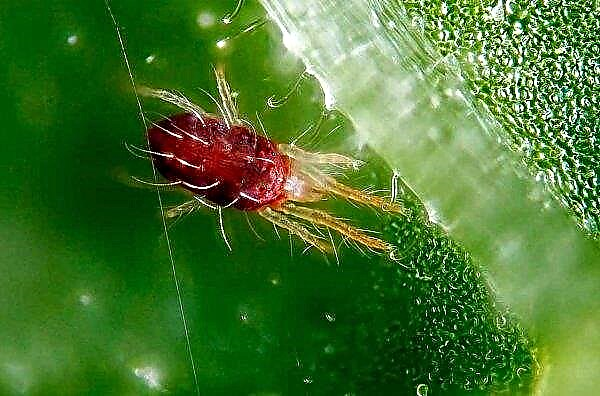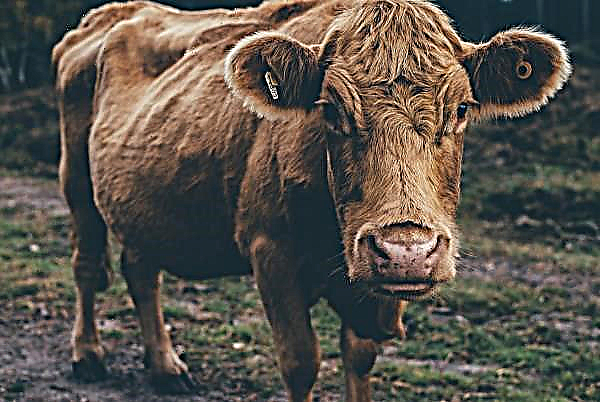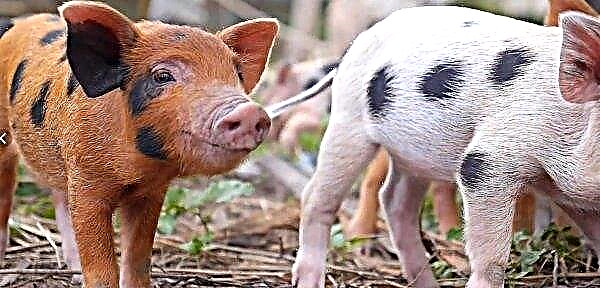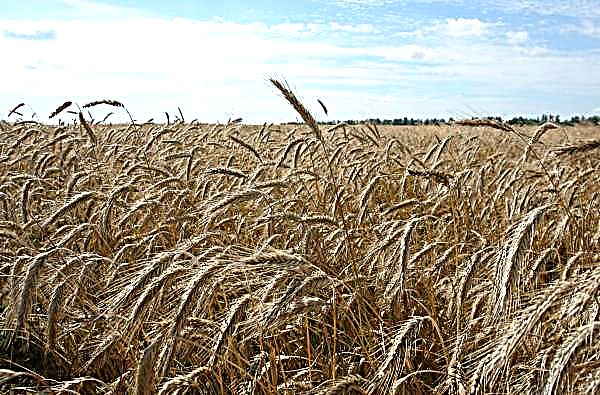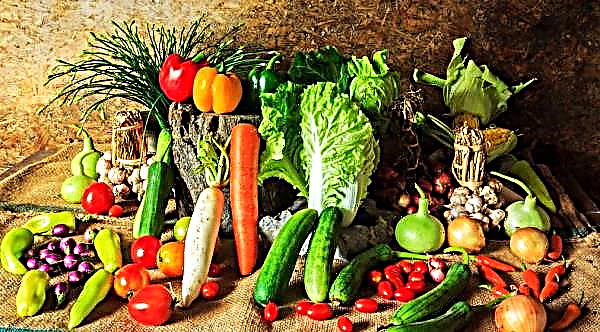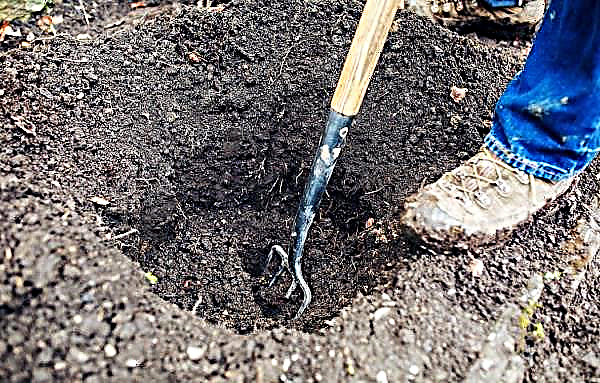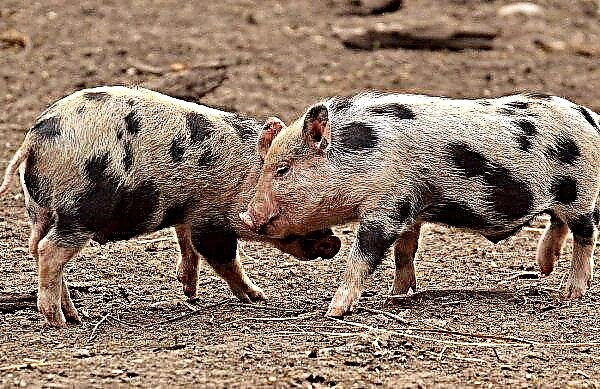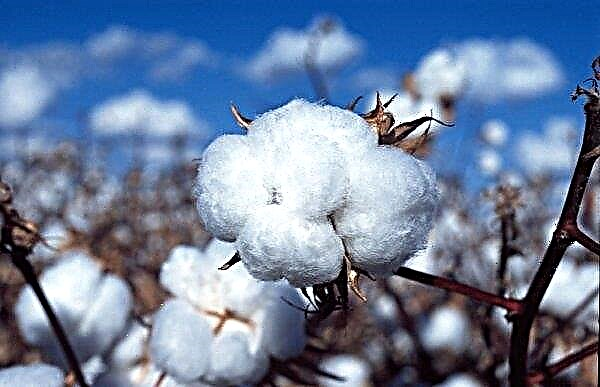The falling ovaries of tomatoes causes gardeners considerable grief and anxiety. Measures to save the remaining inflorescences must be taken immediately, otherwise you can be left without a crop. Let us see what can cause color falling, how to act in this case, what are the preventive measures.
Why tomatoes bloom, but not ovary
The reasons why the ovary begins to fall off the tomatoes may be the following:
- Temperature violation. Extreme heat (above + 30–35 ° C) or cold (below -15 ° C) leads to the fact that the fruits simply do not set. The optimum temperature for tomatoes is considered to be in the range of + 20–25 ° C.
- Humidity deviation. With too much dryness and lack of watering, the leaves of the plant curl up, the top droops, and the color begins to fall. With increased humidity, tomato pollen becomes sticky and unable to set fruit. In addition, increased moisture provokes fungal diseases.
- Lack of light. Failure to choose a place for planting tomatoes (shaded) or too much thickening can negatively affect the formation of buds. In a shady place, tomatoes usually have no fruit. The same situation can occur with prolonged cloudy weather.
- Wrong watering. Tomatoes should not be watered with cold water. Such stress can cause not only falling of the ovary, but also provoke various diseases.
- Lack of molding. Stepchildren and excess leaves and branches pull on themselves, causing a worsening of tying.
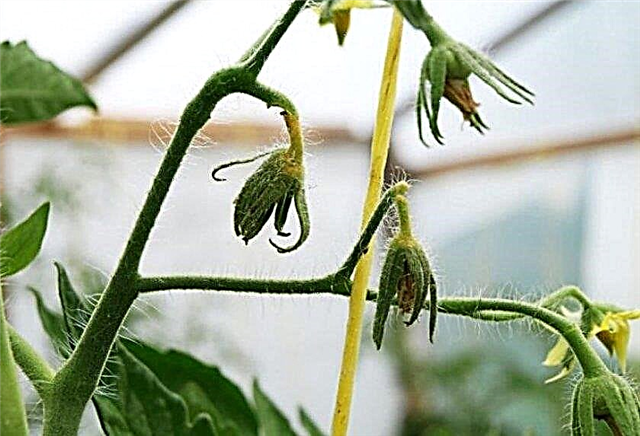
- Tomato Disease. A sick bush drops its ovaries, often the disease affects the buds themselves.
- Pests. Many tomato pests spoil the ovaries, color, and buds, reducing the number of fruits to set.
- Excess elements. Excess nitrogen during flowering negatively affects the structure of the flowers.
- Lack of elements. Lack of phosphorus and potassium during flowering and fruit setting results in few ovaries forming on the tomatoes.
- Crop failure. When tomatoes are often grown in the same place or after other solanaceous crops, they begin to lack elements for normal development.
- Pesticides during flowering. Only approved drugs should be used, and it is best to use measures to prevent the appearance of diseases and pests.
- Bad seed. Collecting seeds from hybrids that do not pass on their qualities to future generations, which can form a lot of barren flower.
- Tomato variety. In multiple and large-fruited tomatoes, ovary dropping is often observed.
Important! Tomatoes can be re-planted in the same place only after 3-4 years. In greenhouses, their cultivation is recommended to alternate with cucumbers.
In the greenhouse
Greenhouse tomatoes are more likely to drop ovaries:
- When planting too early in the greenhouse. In this case, the plants often have to be lightened and heated. During this period, plants are watered with warm water and monitor not only the temperature of the air, but also the temperature of the soil.
- In the absence of ventilation. Greenhouse conditions often contribute to high temperatures. In the greenhouse, it is recommended to make at least 2-3 openings in order to discharge excess heat during the heat.
- Lack of pollination. On the street in tomatoes, pollination occurs naturally through the influence of air vibrations. In an unventilated greenhouse there is no movement of air masses and insects.
- High humidity. Water from the greenhouse does not evaporate as soon as from open ground, so you need to make sure that during flowering of tomatoes the humidity does not exceed the norm.
- Lack of crop rotation. Tomatoes in greenhouses often sit in the same place, so it is important to properly fertilize the soil and feed the plants. It is necessary to carry out preventive work against diseases and pests, especially if they have already appeared in past years.
Video: What to do if tomatoes are not tied in a greenhouse
In the open ground
For tomatoes, it is important to take the right place. It should be well lit by the sun, not be in a lowland with stagnation of water. The best precursors for them are legumes and gourds, onions, carrots and cabbage. Tomato is not recommended to be planted in the same place or after other solanaceous plants.
It is important to choose a landing time so that the threat of frost passes. Do not water directly from the well.
Video: The reasons for the lack of ovaries on tomatoes in the open ground
Prerequisites for ovary
If possible, you need to create or use optimal conditions for growing tomatoes.
For good fruit setting, they should be as follows:
- daytime temperature - +25 ° C, nighttime - + 17–19 ° C;
- soil moisture - at the level of 80%;
- relative humidity of air - 60%;
- the light intensity for the beginning of flowering is 4–5 thousand lux, and during fruiting - 10 thousand lux.
Did you know? Scientists have found that the color spectrum of light affects the development and flowering of tomatoes. In blue light it does not differ from ordinary sunlight, but in red it starts to slow down. But when illuminated in the green spectrum, their growth slows down, and flowering may not occur at all.
What to do and how to process tomatoes
There are some agricultural practices that help preserve the ovary on tomatoes.
Pollination
Creating conditions for pollination is very important for greenhouse tomatoes. For this, airing is done with the creation of a warm draft and the possibility of visiting the shelter by pollinating insects. Around greenhouse plants, flowers are planted, which are honey plants and attract insects. In the cold period, fans turn on in the greenhouses or shake the bushes.
You can use the well-known manual method - pollen is transferred using a brush.
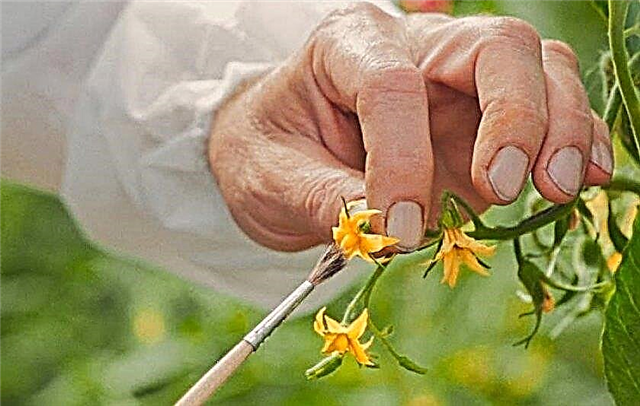
Top dressing
Before flowering, in order for the plant to develop better and plant more inflorescences, tomatoes are fertilized with organic or complex mineral fertilizers containing nitrogen, phosphorus and potassium. Usually, such top dressing is done 2 weeks after transplanting seedlings.
During the flowering period, it is useful to feed these plants with phosphorus and potash fertilizers. For this, such dressing is suitable - dissolve 15 g of double superphosphate and potassium sulfate in a 10-liter bucket of water.
Many gardeners during this period like to fertilize the beds with ash. It contains potassium and many other micro and macro elements, but is not as effective as mineral fertilizers.
Important! But nitrogen and nitrogen-containing fertilizers in this period should be significantly reduced. The abuse of manure, chicken droppings and nitrate will result in a strong, well-leafy tomato bush, on which the fruits have not been tied.
Comprehensive “green” fertilizer will be much more effective. To prepare it, chopped weed grass (nettle is best suited) in a 200-liter barrel, ½ bucket of chicken droppings, a 100-gram pack of baker's yeast, 1 liter of whey and 1 kg of ash. All is poured with water and insisted for 2 weeks. Then 0.5 l of the resulting liquid is diluted in a 10-liter bucket and fertilized tomatoes no more than 1 time in 2 weeks. Such top dressing not only contributes to good fruit setting and plant growth, but also excellently increases their resistance to diseases and various adverse weather factors.

Iodine
To improve the appearance of color in tomato bushes, ordinary iodine is used. To do this, 25-30 drops of iodine are taken per 1 bucket of water. This solution is watered with a plant. This procedure will significantly increase productivity.
Iodine can also be used for spraying tomatoes. To do this, add a glass of skim milk and 5 drops of iodine to 1 liter of water. Spray is not plentiful. In some recipes, milk is replaced with whey.
Boric acid
To form a good ovary in tomatoes, you can spray with boric acid. The treatment solution is made in the following proportions: 1 g of boric acid is dissolved in 1 l of hot water. To increase color, as well as to eliminate its falling, this folk remedy is sprayed with plant brushes.
Proper watering
Tomatoes do not like intense heat, as well as excessive moisture. The optimal parameters of soil and air humidity are 80% and 50-60%, respectively. After planting seedlings and heavy watering, the next watering is carried out after 4-5 days. Before flowering watering is carried out twice a week in an amount of 1-2 liters for each plant. During flowering watering is increased to 4-5 l under the bush, but the frequency of watering is reduced - 1 time per week. In severely dry weather watering is recommended at least 2 times a week. In the period of formation and growth of fruits you need to water 1-2 liters under each plant 2 times a week.

For irrigation it is necessary to use warm, settled water. Watering itself is carried out only at the root, sprinkling is unacceptable, as this can lead to burns on leaves from the sun, as well as the appearance of fungal diseases. It is best to use the so-called drip irrigation.
It is advisable to water the tomatoes in the morning or in the evening (3-4 hours before sunset), when there is no intense heat.
Important! A lack of moisture during the flowering period can cause the color to fall, therefore, during this period, the soil should not be allowed to dry out.
Ovary Prevention
Gardeners recommend the following preventative measures to preserve the ovary on tomato bushes:
- Tomatoes should be watered with warm and settled water.. For this purpose, barrels are used in which water settles and heats up to the ambient temperature. It is necessary to maintain the required temperature in the greenhouse at the level of + 20–25 ° С.
- When cooling, warm the greenhouse, make additional shelters (blankets, films, cardboard).
- Planting seedlings only after the threat of frost.
- In dry weather, do not close the greenhouse. During this period, the draft will not be superfluous, since it helps the maturation and movement of pollen, and all this contributes to a better formation of the ovary.
- Timely and correctly to introduce complex mineral and organic fertilizers. At the initial stage of flowering, superphosphate and potassium sulfate are introduced into the soil and made sure that there is no overabundance of nitrogen-containing components.

- Form bushes and pinch. With an appropriate distribution of stems and removal of excess processes (stepsons) during the formation of the bush, the fruiting level increases significantly. As a result of this procedure, the plant culture will be sufficiently lit, and the air will circulate well.
- Do not thicken tomato planting and plant plants according to recommended patterns.
- Choose good quality planting material. Purchase seeds from a reputable producer. Old or poor-quality seeds can lead to a lack of ovary formation and color fading.
- Carry out maintenance work against the appearance of diseases and pests.
- Choose unpretentious and resistant varieties of tomatoes.
- It is best to plant plants of different fruiting periodsto avoid weather vagaries.
To get a good tomato crop, you must carefully monitor the optimal conditions for the appearance of the ovary and, if possible, adjust them. To improve fruit setting during flowering, special feeding and spraying will help, in addition, there are preventive measures to improve the setting of tomatoes.Did you know? It is believed that the constant use of tomatoes is the prevention of cancer. Moreover, this property is not lost during the heat treatment of these fruits. It is useful to include tomato juice, ketchups, tomato paste in your diet.



